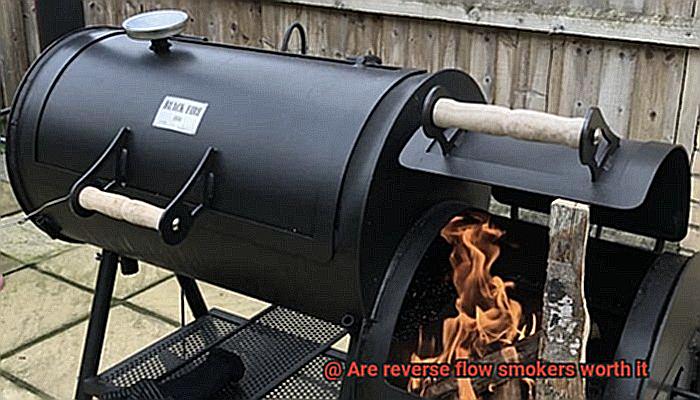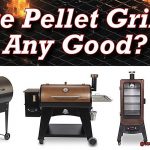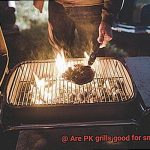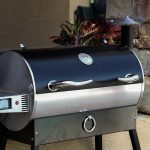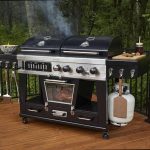Are you on the hunt for a new smoker but feeling overwhelmed by the endless options available? Don’t worry, you’re not alone in this dilemma. With so many types of smokers out there, from traditional offset to pellet and electric smokers, it can be challenging to choose the right one. But if you’re looking for a smoker that delivers both exceptional flavor and efficiency, then it’s time to consider a reverse flow smoker.
Reverse flow smokers have been gaining popularity in recent years, and for good reason. Unlike traditional offset smokers that require constant temperature adjustments, reverse flow smokers use a unique design that evenly distributes heat and smoke throughout the cooking chamber. This results in a more consistent cooking temperature, ensuring your food is cooked to perfection every time.
But what about their price point? Are reverse flow smokers worth the extra investment? In this blog post, we’ll dive into that question and explore all the pros and cons of reverse flow smokers. From their mouth-watering flavor to their relatively high cost, we’ll cover all the essential aspects of this popular smoker style. So whether you’re an experienced pitmaster or just starting out as a backyard barbecue enthusiast, read on to discover whether a reverse flow smoker is worth it for you.
Contents
What is a Reverse Flow Smoker?
If so, it’s time to consider upgrading to a reverse flow smoker. This innovative type of smoker uses a baffle plate to direct smoke and heat from the firebox through the cooking chamber, resulting in a more even temperature and consistent smoke distribution around your meat.
The baffle plate is the key to the success of a reverse flow smoker. It forces the smoke and heat to travel further, ensuring that it has ample time to distribute evenly throughout the cooking chamber. As a result, you get perfectly cooked meat with a delicious smoky flavor every time.
Reverse flow smokers come in various shapes and sizes, but they all follow the same basic design principles. They typically have two chambers: a firebox where the wood or charcoal is burned and a cooking chamber where the meat is placed. The baffle plate sits between these two chambers and directs the smoke and heat through the cooking chamber before it exits through the chimney.
Aside from producing even temperatures and consistent smoke distribution, reverse flow smokers also eliminate hot spots commonly found in other smokers. This means that you don’t have to keep moving your meat around during cooking, reducing the hassle and stress associated with traditional smoking methods.
While reverse flow smokers are more expensive than traditional smokers, they are worth the investment if you’re serious about smoking meat. They offer precise temperature control, produce excellent flavor profiles, and require less maintenance than other types of smokers.
Advantages of Using a Reverse Flow Smoker
One of the key advantages of a reverse flow smoker is its even heat distribution. Thanks to the baffle plate that directs smoke and heat from the firebox to the cooking chamber, there are no hot spots or unevenly cooked portions to worry about. Your meat will be cooked to perfection every time.
Speaking of flavor, the baffle plate also helps to intensify and distribute smoke throughout the cooking chamber. This means that your meat will be infused with a delicious smoky taste that’s consistent from one end to the other. And the versatility of a reverse flow smoker is unmatched, able to handle low and slow smoking as well as high-temperature grilling.
But what if you need to cook for a large group? No problem. Reverse flow smokers come in a variety of sizes, some with multiple racks or shelves, allowing you to cook several different types of meat all at once. Plus, they require less maintenance than traditional smokers, making them easy to use and clean.
So, the advantages of using a reverse flow smoker include:
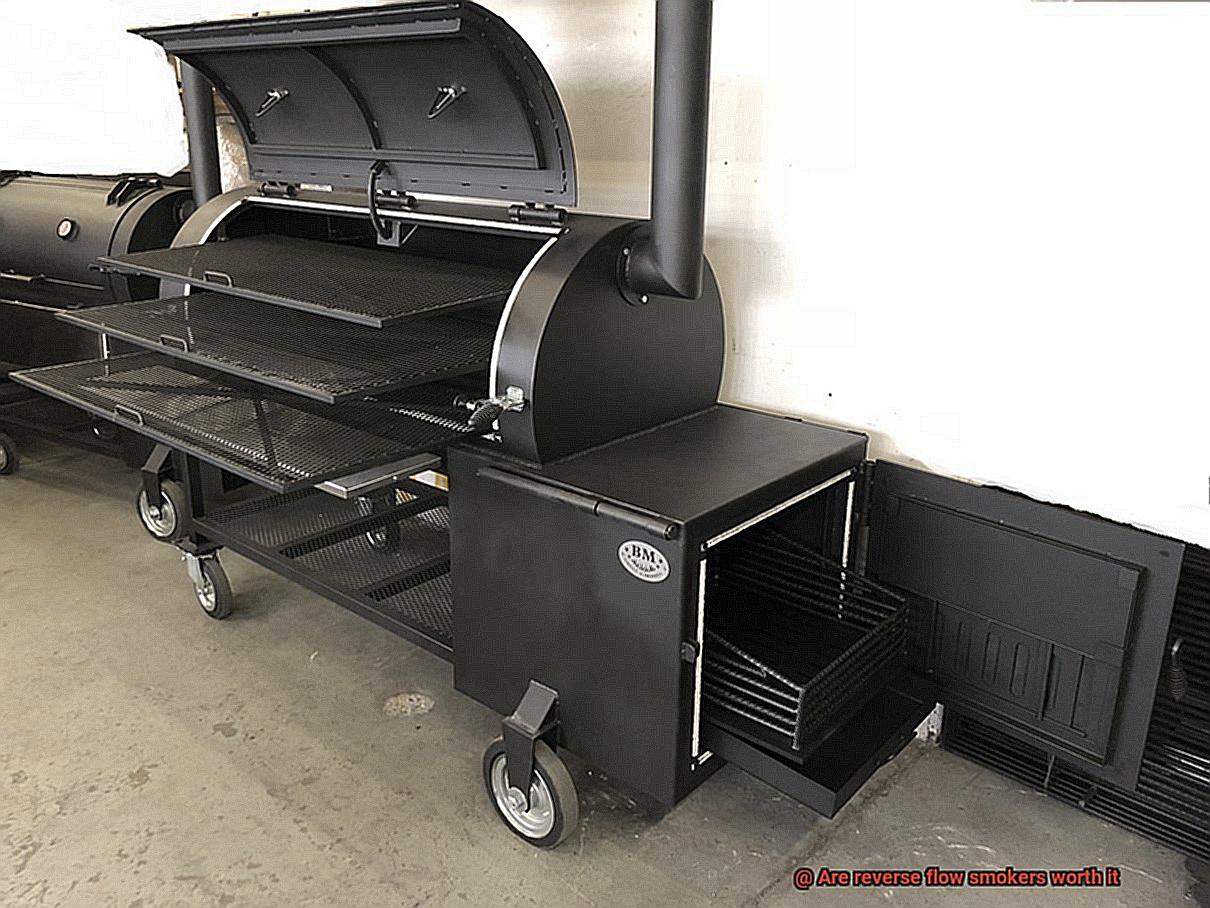
- Even heat distribution for perfectly cooked meat
- Intensified and consistent smoke flavor
- Versatility for a wide range of cooking styles
- Large cooking capacity for feeding a crowd
- Ease of use and maintenance
Disadvantages of Using a Reverse Flow Smoker
As the popularity of outdoor cooking and barbecuing grows, so does the demand for reverse flow smokers. However, before you jump on the bandwagon, it’s essential to understand the potential drawbacks of using this type of smoker. As an expert in this topic, I’ve researched the disadvantages that come with using a reverse flow smoker to help you make an informed decision.
Firstly, let’s address the elephant in the room: cost. Reverse flow smokers are undoubtedly more expensive than traditional smokers. Depending on size and features, prices can range from hundreds to thousands of dollars. So, if you’re on a tight budget, a reverse flow smoker may not be the best option for you.
Another factor to consider is size and weight. Reverse flow smokers are often larger and heavier than traditional smokers, making them difficult to move around or transport. If you live in an apartment or have limited backyard space, this could be a deal-breaker.
Maintenance is another issue to keep in mind when using a reverse flow smoker. These smokers require more upkeep than traditional smokers because the baffle plate needs regular cleaning to prevent grease buildup and maintain proper airflow. If you’re not willing to put in the extra effort to keep your smoker clean, it may not be the best fit for you.
Additionally, there is a learning curve when it comes to using a reverse flow smoker correctly. Beginners may struggle to get consistent results at first due to the different airflow pattern. This means that patience and practice are key when it comes to mastering your reverse flow smoker.
Finally, fuel consumption is another disadvantage of using a reverse flow smoker. Due to their larger size and increased airflow, they use more fuel than traditional smokers. This means that they can be more expensive to operate over time, especially if you plan on using them frequently.
Factors to Consider When Deciding Whether or Not to Invest in a Reverse Flow Smoker
Before you make a purchase, it’s important to consider several factors that will ensure you make an informed decision.
Experience level is crucial when it comes to using a reverse flow smoker. These models tend to be more complex than traditional smokers, so if you’re just starting out, it may be best to start with something simpler. But, if you’re a seasoned pitmaster looking for a new challenge, a reverse flow smoker may be perfect for you.
Size matters, especially when it comes to outdoor cooking equipment. Reverse flow smokers are typically larger than traditional models, so it’s essential to ensure that you have enough space in your outdoor area to accommodate it. Additionally, these types of smokers can be heavy and challenging to move around, so consider whether you plan on transporting your smoker frequently.
The materials used in the construction of the smoker are also a crucial consideration. Reverse flow smokers are built with heavy-duty materials like steel or cast iron, making them more durable and long-lasting. However, this can also make them heavier and more difficult to move around. If you plan on leaving your smoker in one spot and not moving it around too much, then a heavier construction may be worth it.
Lastly, let’s talk about budget. Reverse flow smokers can be more expensive than traditional models due to their complexity and construction materials. It’s important to weigh the investment against your individual needs and preferences before making a purchase.
The Cost of a Reverse Flow Smoker
Let’s explore the cost of a reverse flow smoker and why it might just be the best purchase you make for your BBQ passion.
At first glance, the cost of a reverse flow smoker may seem steep, especially when compared to traditional smokers. However, the benefits of owning one far outweigh the initial price tag. These smokers are designed to provide even heat distribution throughout the cooking chamber, ensuring that every piece of meat is cooked to perfection. Gone are the days of worrying about hot spots or uneven cooking temperatures. With a reverse flow smoker, you can expect tender and juicy meat that is cooked to your exact specifications.
But that’s not all. Reverse flow smokers also offer greater control over temperature and smoke levels, allowing for more consistent and flavorful results every time you smoke. Imagine being able to experiment with different wood chips and flavors, knowing that your meat will turn out perfectly every time. It’s no wonder that many BBQ enthusiasts swear by their reverse flow smokers.
Of course, the cost of a reverse flow smoker can vary depending on size, materials used, and additional features. Smaller models can be purchased for a few hundred dollars, while larger commercial-grade models can cost several thousand dollars. However, it’s important to keep in mind that this is an investment in your BBQ future. High-quality reverse flow smokers are built to last for years with proper maintenance. This means that you won’t have to worry about constantly replacing your smoker, as it will provide reliable and consistent results for many years to come.
How to Choose the Right Size and Type of Reverse Flow Smoker for Your Needs
Smoking meat is an art form and choosing the right reverse flow smoker for your needs is essential for achieving the perfect flavor and tenderness. Here are five key factors to consider when choosing the right size and type of reverse flow smoker.
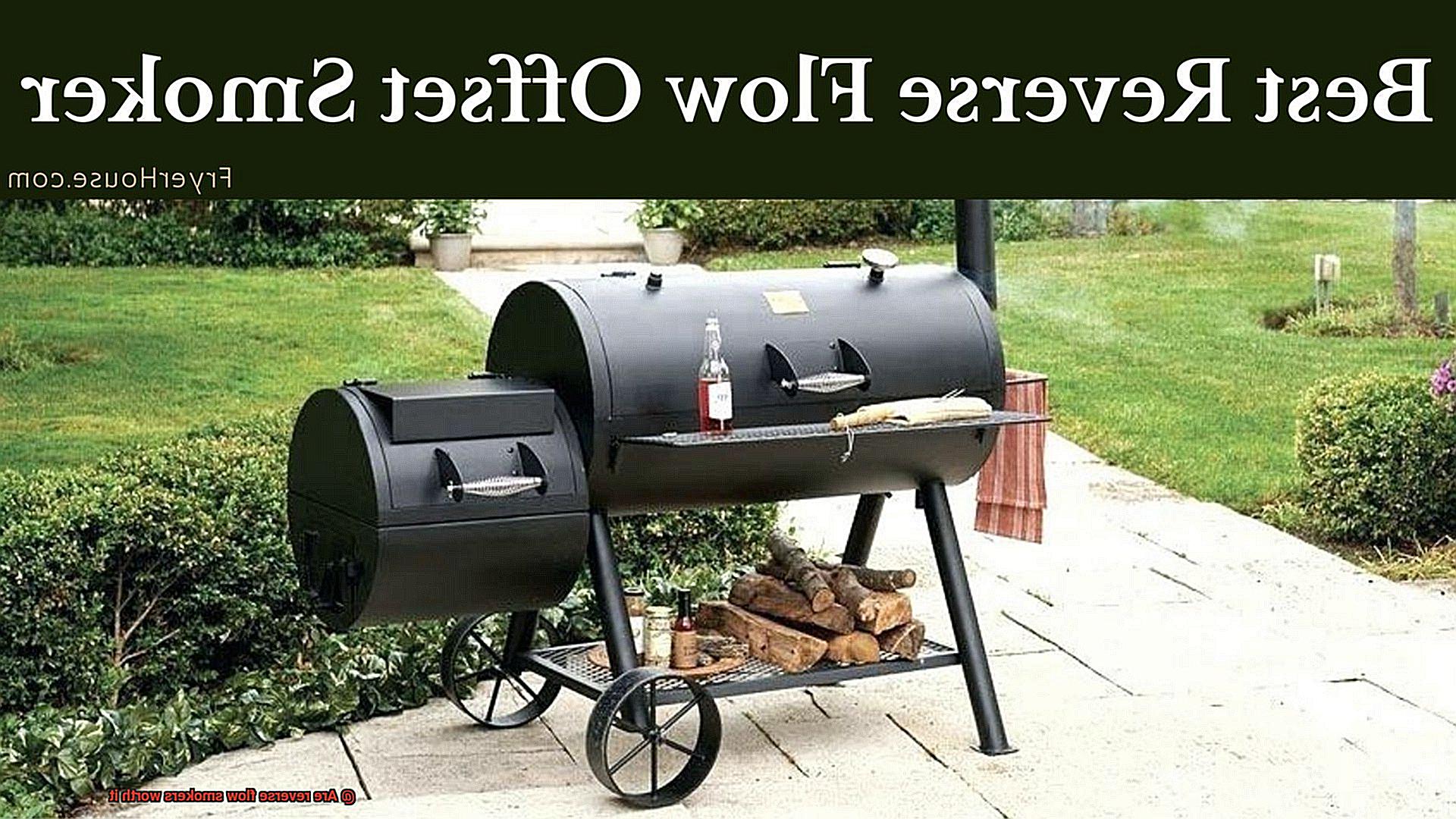
Food Capacity
The first factor to consider is the amount of food you plan to smoke at one time. If you’re only smoking for a few people, then a smaller smoker may be sufficient. However, if you’re planning on hosting larger gatherings or smoking larger cuts of meat, then a larger smoker will be necessary. It’s important to choose a smoker that can accommodate your needs without overcrowding the cooking chamber, which can affect the cooking process.
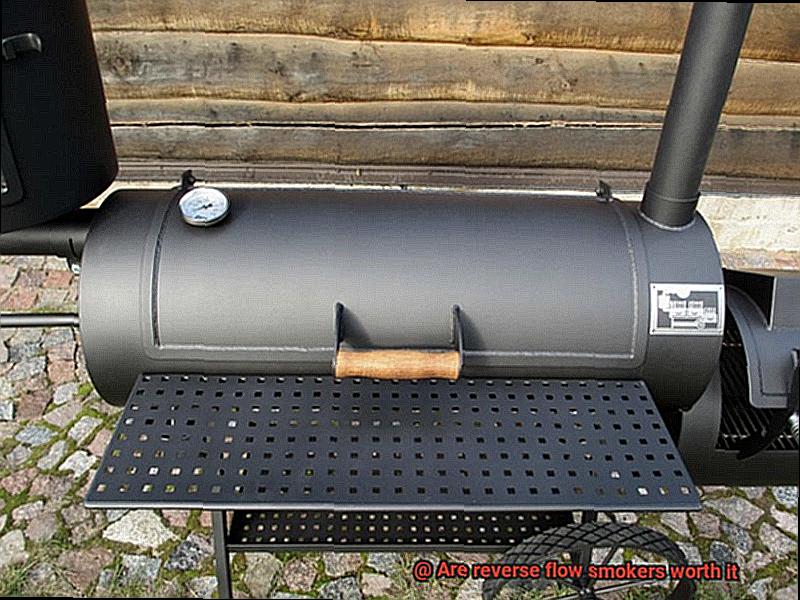
Fuel Source
The type of fuel you use can also affect the flavor and cooking process of your meat. Reverse flow smokers can run on wood, charcoal, or propane. Wood provides a traditional smoky flavor, while propane offers convenience and ease of use. Charcoal is a good compromise between the two, providing a rich taste and allowing for precise temperature control.
Construction Materials
The construction materials of the smoker are important for durability and heat retention. Stainless steel is a popular choice due to its resistance to rust and corrosion, but it can be more expensive than other materials. Cast iron retains heat well but is heavy and may require seasoning. Aluminum is lightweight but may not provide even heat distribution.
Additional Features
Consider any additional features you may need such as built-in temperature gauges, multiple racks for smoking different types of food at once, wheels for easy transport, handles for lifting, and drip pans for easy cleanup. These features can make your smoking experience more efficient and enjoyable.
Available Space
Finally, consider the space you have available for your smoker. If you have limited space, then a smaller smoker may be the best option. On the other hand, if you have ample space, then a larger smoker may be more suitable for your needs. It’s important to choose a smoker that fits your space and can be easily moved if necessary.
Tips for Getting the Most Out of Your Reverse Flow Smoker
To make the most of your reverse flow smoker, there are some tips and tricks that you should keep in mind. Let’s take a closer look at these tips and explore how they can help you achieve delicious, restaurant-quality BBQ at home.
Tip 1: Season Your Smoker
Before using your reverse flow smoker for the first time, it’s crucial to season it. This involves coating the interior with cooking oil or spray and heating it at a high temperature for several hours. The seasoning process helps to create a non-stick surface and prevents rust from forming, ensuring that your smoker lasts longer and performs better.
Tip 2: Use Quality Wood
The type and quality of wood you use can significantly affect the flavor and outcome of your smoked meats. It’s recommended to use hardwoods such as oak, hickory, or mesquite for smoking as they provide a robust, smoky flavor that complements meats well. Experiment with different types of wood to find the best flavor for your taste preferences.
Tip 3: Maintain Consistent Temperature
Consistent temperature is crucial in producing perfectly smoked meats. A reverse flow smoker has a built-in baffle that helps to distribute heat evenly throughout the cooking chamber. However, it’s still essential to monitor the temperature using a thermometer and adjust the airflow if necessary. This ensures that your meat cooks evenly and retains its moisture, resulting in juicy, tender meat.
Tip 4: Monitor Smoke Production
Smoke production plays a vital role in achieving great smoked meats. Too much smoke can result in bitter-tasting meat while too little smoke may not provide enough flavor. It’s recommended to use wood chunks or chips instead of sawdust as they produce a more consistent and controllable smoke. Keep an eye on the smoke production to ensure that your meat is getting just the right amount of smoky flavor.
Tip 5: Patience is Key
Smoking meats is a slow cooking process that requires patience and attention to detail. It’s important to allow enough time for the meat to cook thoroughly and absorb the flavors from the wood smoke. Avoid rushing the process by opening the smoker too frequently or increasing the temperature. Slow and low cooking is what makes a reverse flow smoker effective in producing tender, flavorful meat that melts in your mouth.
Common Mistakes People Make When Using Reverse Flow Smokers
Firstly, one of the biggest mistakes is not properly seasoning your smoker before use. This step is crucial in creating a protective layer that prevents rust and enhances the flavor of smoked meats. Skipping this step can lead to rusting, which can affect the taste of your food and pose potential health risks from rust flakes.
Another mistake is not using enough wood or charcoal to maintain a consistent temperature. Reverse flow smokers require a steady heat supply to maintain proper smoking temperatures. Insufficient fuel can cause temperature fluctuations, resulting in uneven cooking. It’s essential to monitor the temperature closely and add more fuel as needed to maintain a consistent heat level.
Similarly, not managing air flow correctly within the smoker can cause sudden temperature changes or even start a fire. Understanding how to adjust airflow based on your smoker’s design is critical for maintaining consistent temperatures and preventing flare-ups.
Lastly, neglecting proper cleaning and maintenance after each use can lead to a build-up of grease and ash that can affect the smoker’s performance and potentially cause damage over time. Regular cleaning and maintenance will ensure that your reverse flow smoker continues to work correctly for years to come.
xy4T6qqum8g” >
Conclusion
In conclusion, if you’re a serious barbecue enthusiast looking for optimal flavor and consistent results, then investing in a reverse flow smoker is definitely worth considering. Although they may come with a higher price tag than traditional smokers, their unique design guarantees even heat distribution and smoke circulation throughout the cooking chamber, resulting in perfectly cooked meat every time. Furthermore, they offer greater control over temperature and smoke levels, making them versatile for a wide range of cooking styles.
However, it’s crucial to weigh the potential drawbacks of using a reverse flow smoker before making your final decision. They can be bulky and challenging to move around, require regular maintenance to keep clean, and consume more fuel than traditional smokers. But with proper care and attention to detail, these issues can be easily managed.
When selecting the right size and type of reverse flow smoker for your specific needs, take into account factors such as food capacity, fuel source, construction materials, additional features, and available space. And once you have your smoker up and running, follow these essential tips for getting the most out of it: season your smoker before use; use high-quality wood; maintain consistent temperature; monitor smoke production; and practice patience.
By avoiding common mistakes such as failing to properly season your smoker or neglecting cleaning and maintenance after each use, you can ensure that your reverse flow smoker continues to provide mouth-watering meals for years to come.

